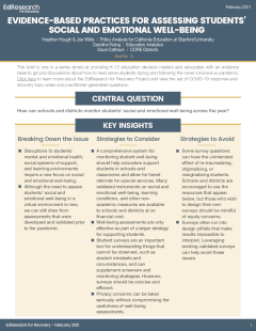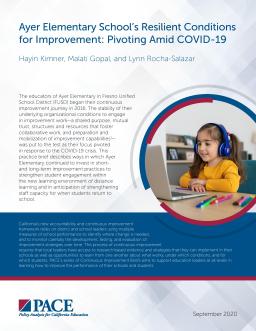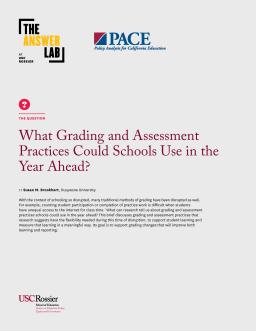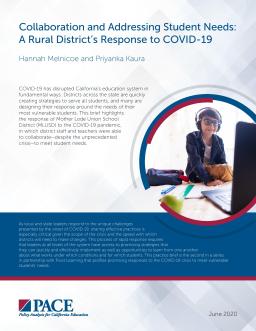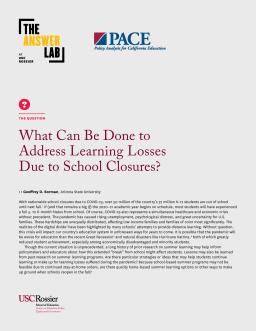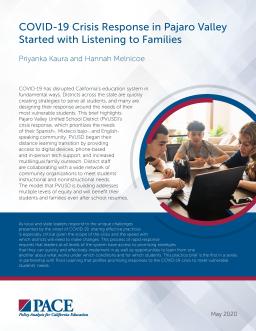Summary
Summary
Summary
Summary
Summary
Summary
COVID-19 school closures may intensify the typical academic "slide" observed in math and reading over the summer break. Schools can consider online summer programs, ramped-up assessment, targeted instruction, and one-to-one tutoring to mitigate learning losses.
Summary
This brief discusses how the Pajaro Valley Unified School District (PVUSD) in California is addressing the challenges of COVID-19 through family engagement and instructional access for English learners. The district has a history of serving all students through bilingual programming and a whole-child approach, and over 40% of its population are classified as English learners. PVUSD is a member of the national League of Innovative Schools and is known for its inclusive, data-driven decision-making.

